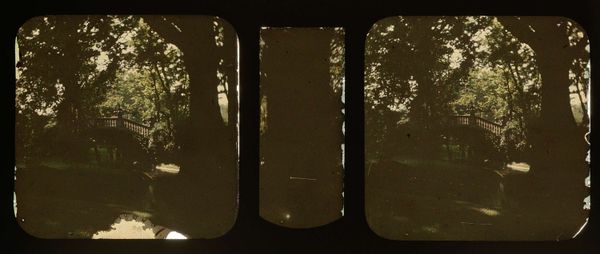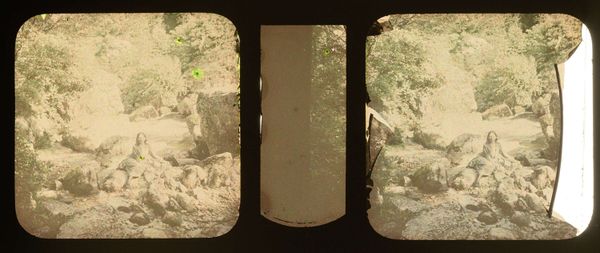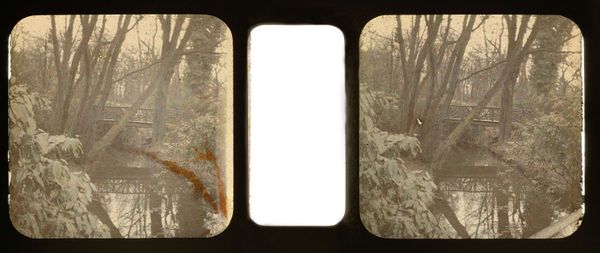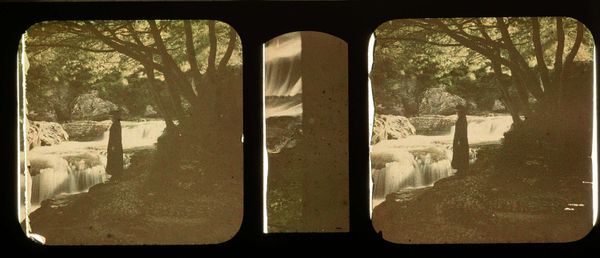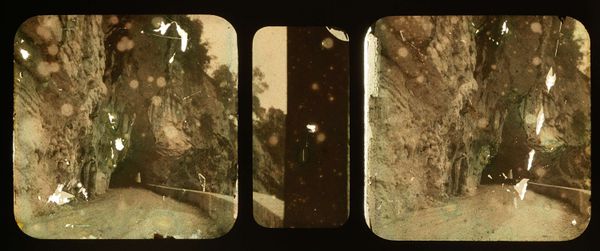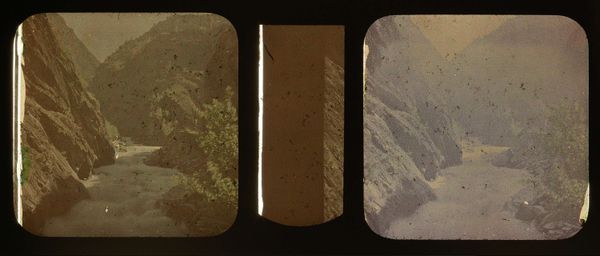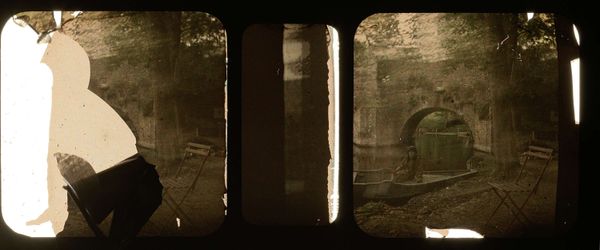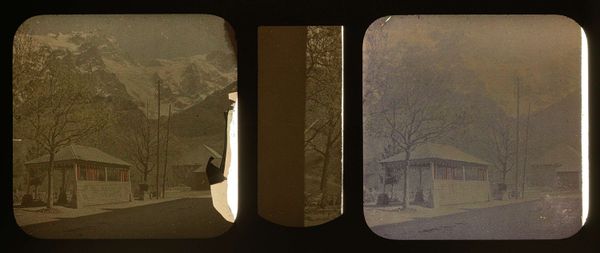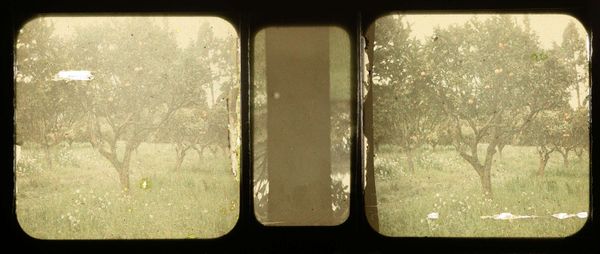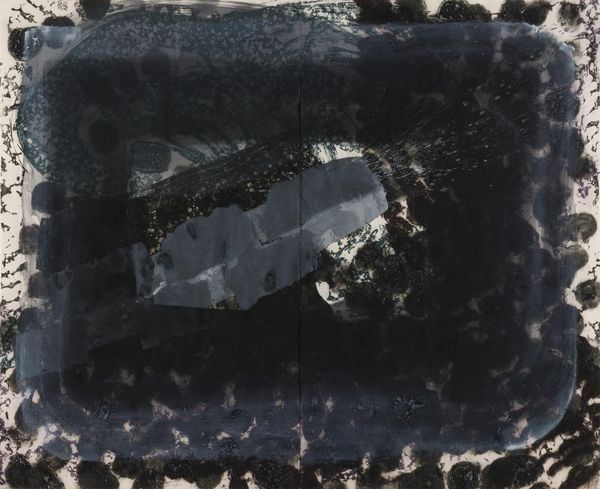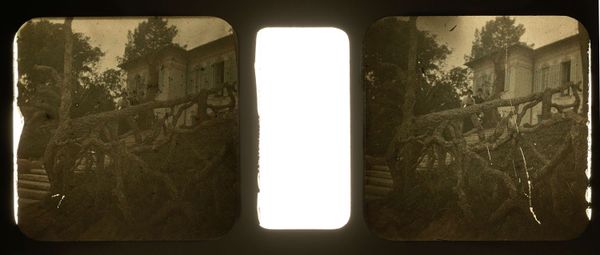
Dimensions: height 75 mm, width 150 mm
Copyright: Rijks Museum: Open Domain
Editor: We’re looking at "Man en vrouw, zittend aan de waterkant" by Adolphe Burdet, dated sometime between 1907 and 1935. It's a photograph, and what strikes me first is the way the composition divides the scene, creating an almost voyeuristic feel as we glimpse this couple by the water. How do you interpret the public nature of this very private scene? Curator: That's a keen observation. Considering the social context of early photography, particularly impressionistic landscapes, we have to acknowledge how it democratized art, bringing previously elite subjects like landscape and portraiture to a broader audience. But who *is* this "broader audience"? Did the growing middle class change artists' vision in depicting such leisurely settings? Editor: So, the public availability and accessibility of photography perhaps shaped how subjects were presented or even staged? Curator: Precisely. And think about the power dynamics inherent in image-making itself. Who has access to the equipment, who is choosing the subject, who is meant to consume this photograph? Was Burdet consciously reacting to social change through landscape? I see the way light diffuses the scene and obscures sharp details. Editor: That makes sense. Now I’m thinking about how the figures become a part of this larger setting rather than the main focus of the photo. Almost as if to comment on man's place within nature's vastness. Curator: Exactly! Consider then, the public's access to such imagery: how does repeated viewings normalize leisure or idealize this specific relationship with nature? What political implications arise when similar photos are seen as art, compared to when such images become advertisements, and viewed as documentary materials? It is also a work of the past and thus represents a bygone era. How does memory play a role in appreciating the work now? Editor: These perspectives make me think differently about how much the socio-political lens impacts our view of even quiet snapshots of nature. Curator: Indeed! Analyzing such artworks involves unraveling the complex ways in which museums and the public are involved in giving imagery meaning and how societal structure shaped them.
Comments
No comments
Be the first to comment and join the conversation on the ultimate creative platform.
